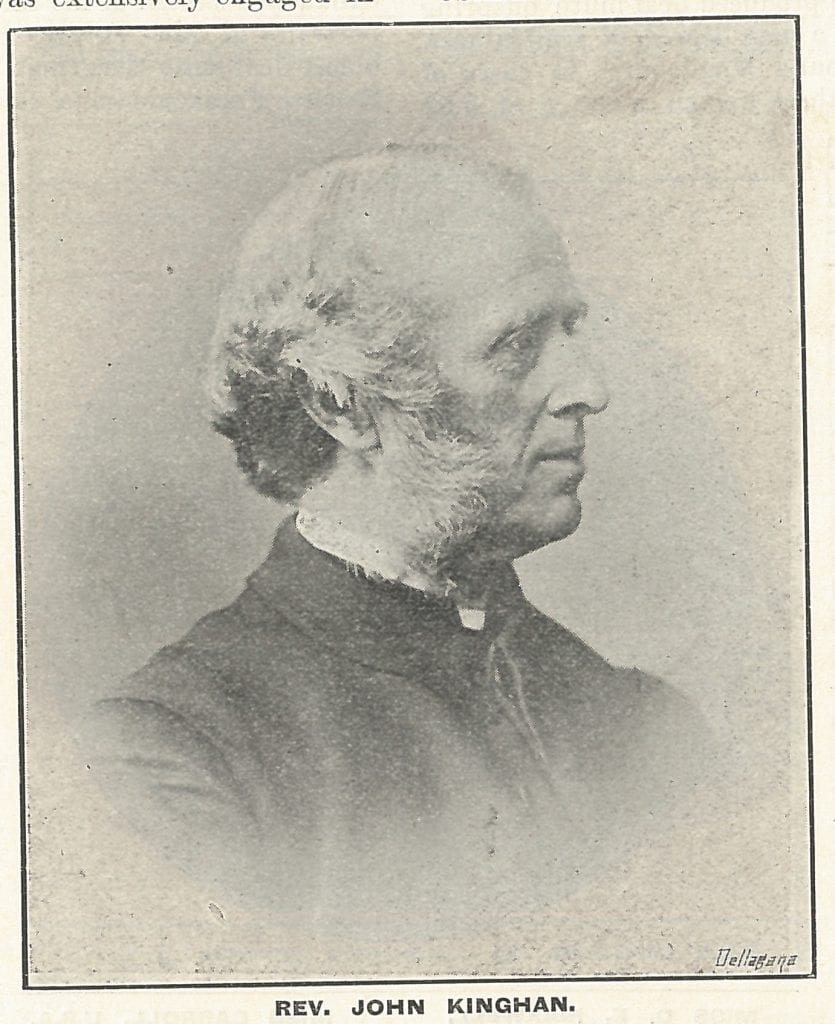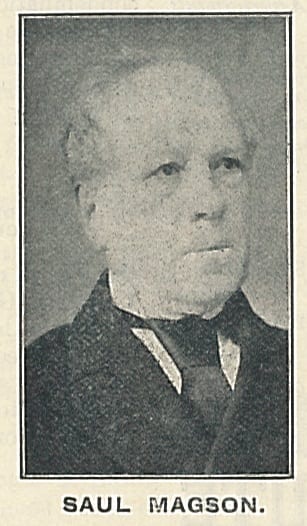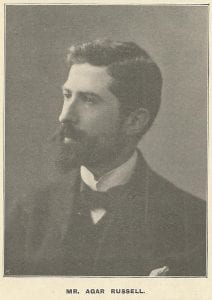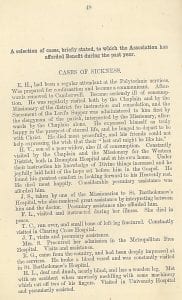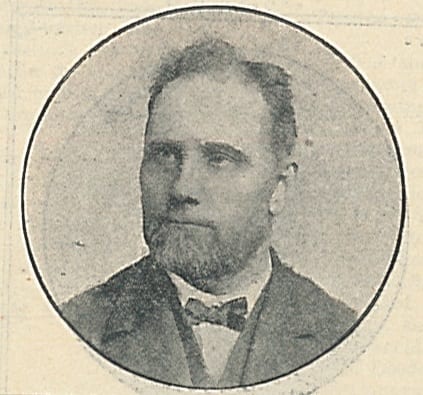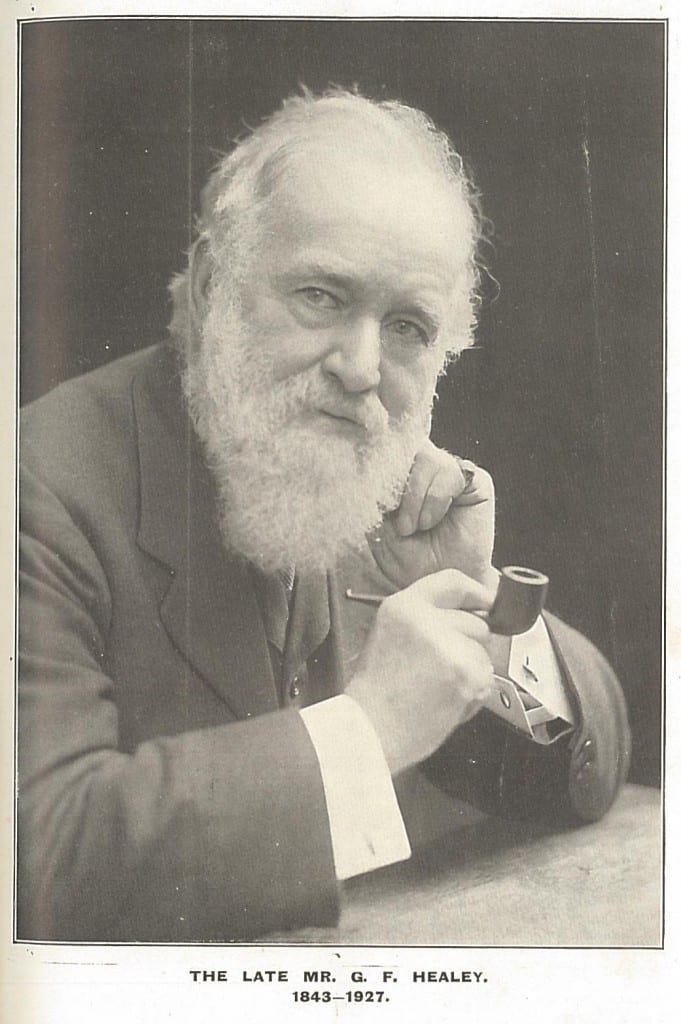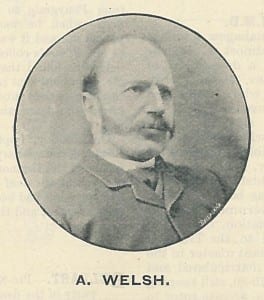The Rev. John Kinghan of Belfast Deaf Institution and Mission
By H Dominic W Stiles, on 10 March 2017
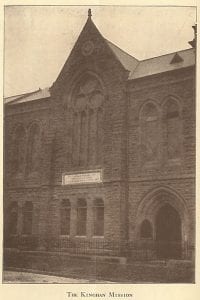 The Rev. John KINGHAN, (1823-1895) was Principal of the Belfast Institution for the Deaf and Dumb. Born in Ballymacarn, son of William Kinghan, John was educated at Dr. Blain’s Academy in Arthur Street, Belfast (see Obituary for what follows). He went on to Belfast College, which was Presbyterian, obtaining his licence in 1852. As early as 1845 we are told that he was giving instruction to Deaf and Dumb pupils in the Institution in Lisburn Road. He may have met Charles Rhind at that time as he was Principal there for a while. This was, of course, the period of the great famine in Ireland. In May 1853 Kinghan took over from Rhind’s successor and predecessor, the Rev. John Martin, who then emigrated to America, being unanimously chosen from a list of nine candidates. He remained at the school for the rest of his life, though after two bouts of illness he had to withdraw from much of the management work at the school in 1879 and 1884. He does not appear to have done anything particularly extraordinary or remarkable.
The Rev. John KINGHAN, (1823-1895) was Principal of the Belfast Institution for the Deaf and Dumb. Born in Ballymacarn, son of William Kinghan, John was educated at Dr. Blain’s Academy in Arthur Street, Belfast (see Obituary for what follows). He went on to Belfast College, which was Presbyterian, obtaining his licence in 1852. As early as 1845 we are told that he was giving instruction to Deaf and Dumb pupils in the Institution in Lisburn Road. He may have met Charles Rhind at that time as he was Principal there for a while. This was, of course, the period of the great famine in Ireland. In May 1853 Kinghan took over from Rhind’s successor and predecessor, the Rev. John Martin, who then emigrated to America, being unanimously chosen from a list of nine candidates. He remained at the school for the rest of his life, though after two bouts of illness he had to withdraw from much of the management work at the school in 1879 and 1884. He does not appear to have done anything particularly extraordinary or remarkable.
No one familiar with this Institution can overlook the lengthened and valuable services of the Rev. John Kinghan. This gentleman has for so many years been identified with its working that he has come to be regarded as the Society itself. His devotion to the cause of the deaf and dumb and the blind is widely known, and he has the satisfaction of seeing now a marvellous development of a work in the Institution, of which he was the leading figure. His efforts have been ably seconded by Mr. James Bryden, the Head Master, a zealous and accomplished teacher, and Mr. John Beattie, the first assistant who graduated in the concern and is acquainted with all the details. (from Quarterly Review of Deaf-Mute Education, 1891, quoting The Belfast News Letter, of 4th February, 1891).
On 17th of May 1857, Kinghan started a mission to the deaf, obtaining the use of a room in Sandy Row where he could hold services for the deaf of Belfast. This later moved to the Great Victoria Street schoolhouse, and in 1878 a special building, “the Bethel,” was erected in Sandy Row.
Below is the back cover of the 1914 report, with a picture of the Jubilee Home for women which the mission ran. I expect there is information on this in the British Deaf Times where the picture comes from. I am not sure what year the home began or when it closed. Do tell us if you know more about it in the comments field below.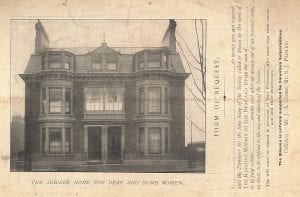
Obituary. British Deaf-Mute, 1895, 5, 25. (photo)
Quarterly Review of Deaf-Mute Education, 1891, 2, 262-69, 289-95.
Annual Reports 1909,1913, 1914, 1917, 1919, 1924, 1929, 1930, 1932, 1934, 1935, 1943, 1948
http://jordanstownschool.org/wp/wp-content/uploads/2015/03/HisGov.pdf
His Family:
http://www.thepeerage.com/p38223.htm#i382221
One of his female ancestors, Catherine Sheridan, had an argument with one of the last wolves in Donegal – http://www.thesilverbowl.com/familytree/Dill_descendants.htm
His Church:
https://www.presbyterianireland.org/Mission/Mission-Projects/Kinghan-Church.aspx
 Close
Close


